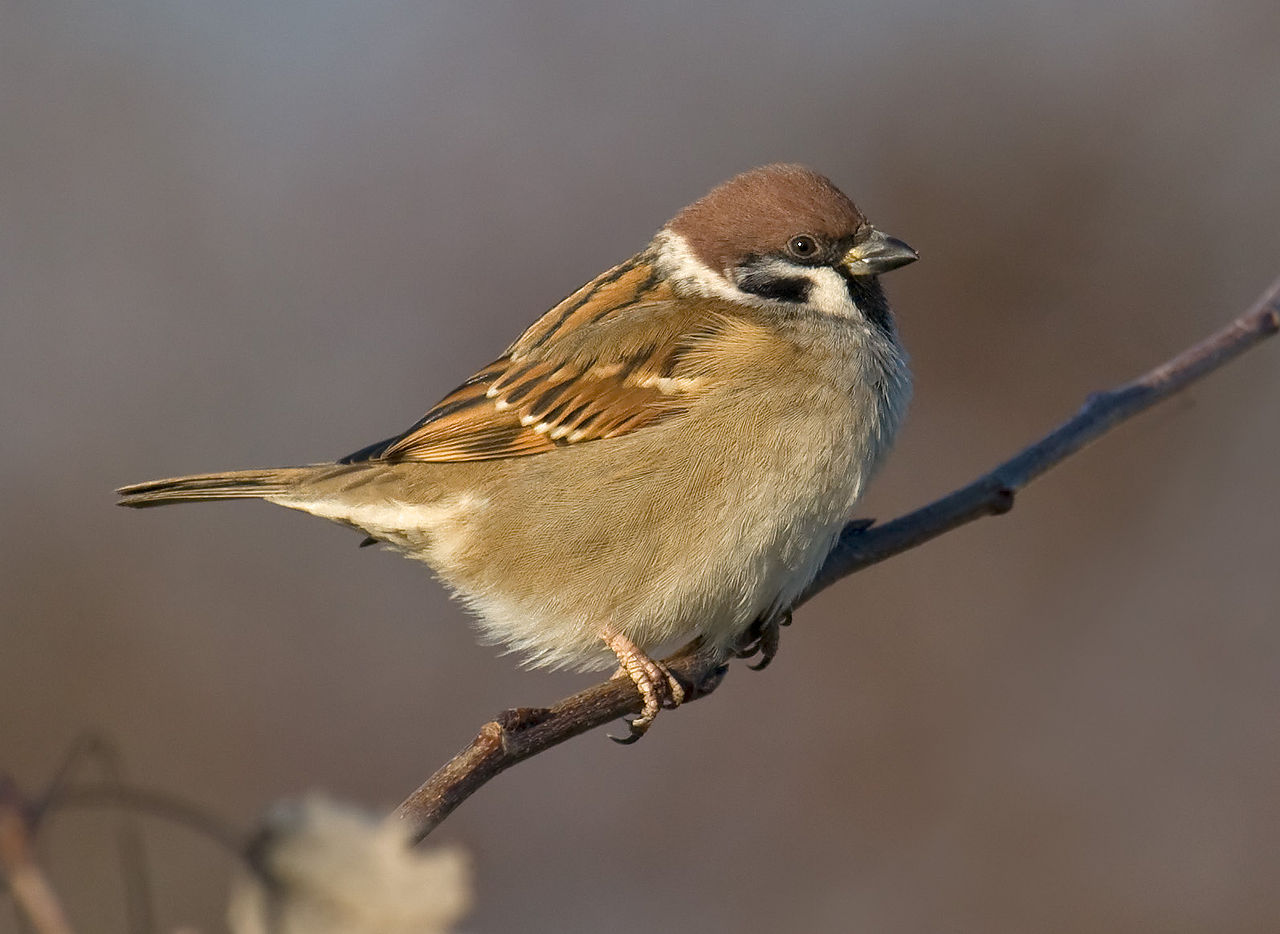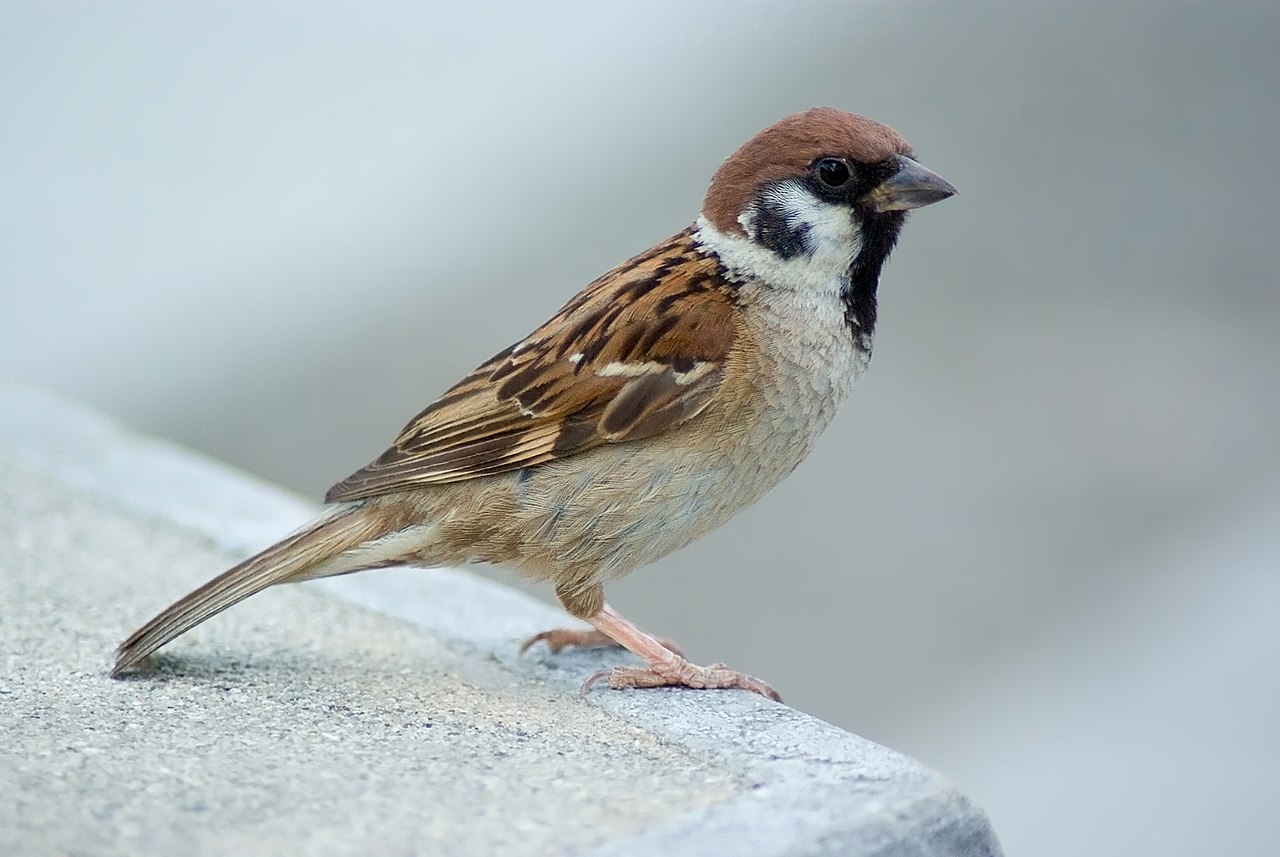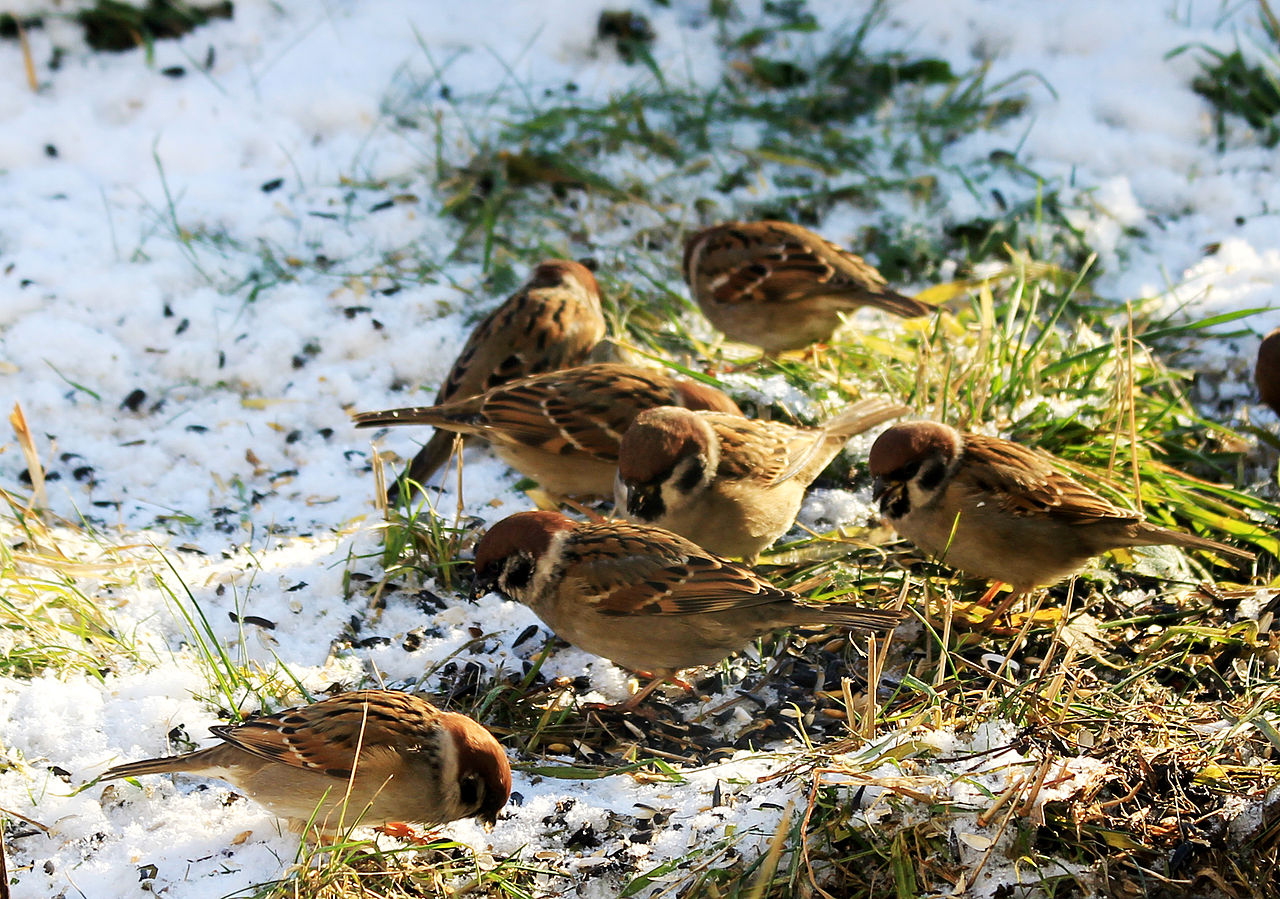Garden Wildlife
Garden Wildlife


Tree sparrow Passer montanus
Tree sparrows are birds of arable and pasture land, but are found in the more rural suburban areas. They are recorded in only about 5% of gardens, from the Midlands north to eastern Scotland, and on the east coast of Ireland.
What do they look like?
They are very like male house sparrows in general appearance, but distinguished by having a chestnut brown crown to their head, and a distinct black cheek patch. They have a white collar which extends further than in the house sparrow. The two sexes are alike. See our "sparrows" page to compare species.
What do they sound like?
A cheerful repeated chirp and chattering:
What do they eat?
Tree sparrows, like house sparrows, are basically seed eaters with strong beaks, but like many birds they feed their young on insects and spiders.
How are they doing?
Tree sparrow populations plummeted catastrophically for no clear reason from 1970 to 1990, numbers reducing by about 97%. Since 2000 there has been some recovery by about 60% from the low baseline so numbers are still only 5% of those of the 1970's, with an estimated 245,000 territories in 2016. The species is Red-listed because of its long term decline.
Finding out more:
BTO profile on tree sparrow
RSPB profile on tree sparrow
Page written and compiled by Steve Head


Romuald Mikusek, XC697507. Accessible at www.xeno-canto.org/697507.
Jens Kirkeby, XC697536. Accessible at www.xeno-canto.org/697536.
Grzegorz Lorek, XC699131. Accessible at www.xeno-canto.org/699131.
Here is the sound of flock of 10 or more roosting in a reed bed having a really good natter:
What do they do?
Tree sparrows are quite social and form small colonies and flocks during the breeding season, and much larger flocks in winter, which may also include house sparrows and finches.
In Britain and Ireland they mainly leave the urban habitat to the house sparrow, but in eastern Europe and especially in Asia, tree sparrows replace house sparrows as the typical urban bird.
What do they eat?
Tree sparrows, like house sparrows, are basically seed eaters with strong beaks, but like many birds they feed their young on insects and spiders.
How are they doing?
Tree sparrow populations plummeted catastrophically for no clear reason from 1970 to 1990, numbers reducing by about 97%. Since 2000 there has been some recovery by about 60% from the low baseline so numbers are still only 5% of those of the 1970's, with an estimated 245,000 territories in 2016. The species is Red-listed because of its long term decline.
Finding out more:
Page written and compiled by Steve Head
What do they do?
Tree sparrows are quite social and form small colonies and flocks during the breeding season, and much larger flocks in winter, which may also include house sparrows and finches.
In Britain and Ireland they mainly leave the urban habitat to the house sparrow, but in eastern Europe and especially in Asia, tree sparrows replace house sparrows as the typical urban bird.
Here is the sound of flock of 10 or more roosting in a reed bed having a really good natter:
What do they look like?
They are very like male house sparrows in general appearance, but distinguished by having a chestnut brown crown to their head, and a distinct black cheek patch. They have a white collar which extends further than in the house sparrow. The two sexes are alike. See our "sparrows" page to compare species.
What do they sound like?
A cheerful repeated chirp and chattering:


Tree sparrow Passer montanus
Tree sparrows are birds of arable and pasture land, but are found in the more rural suburban areas. They are recorded in only about 5% of gardens, from the Midlands north to eastern Scotland, and on the east coast of Ireland.

























